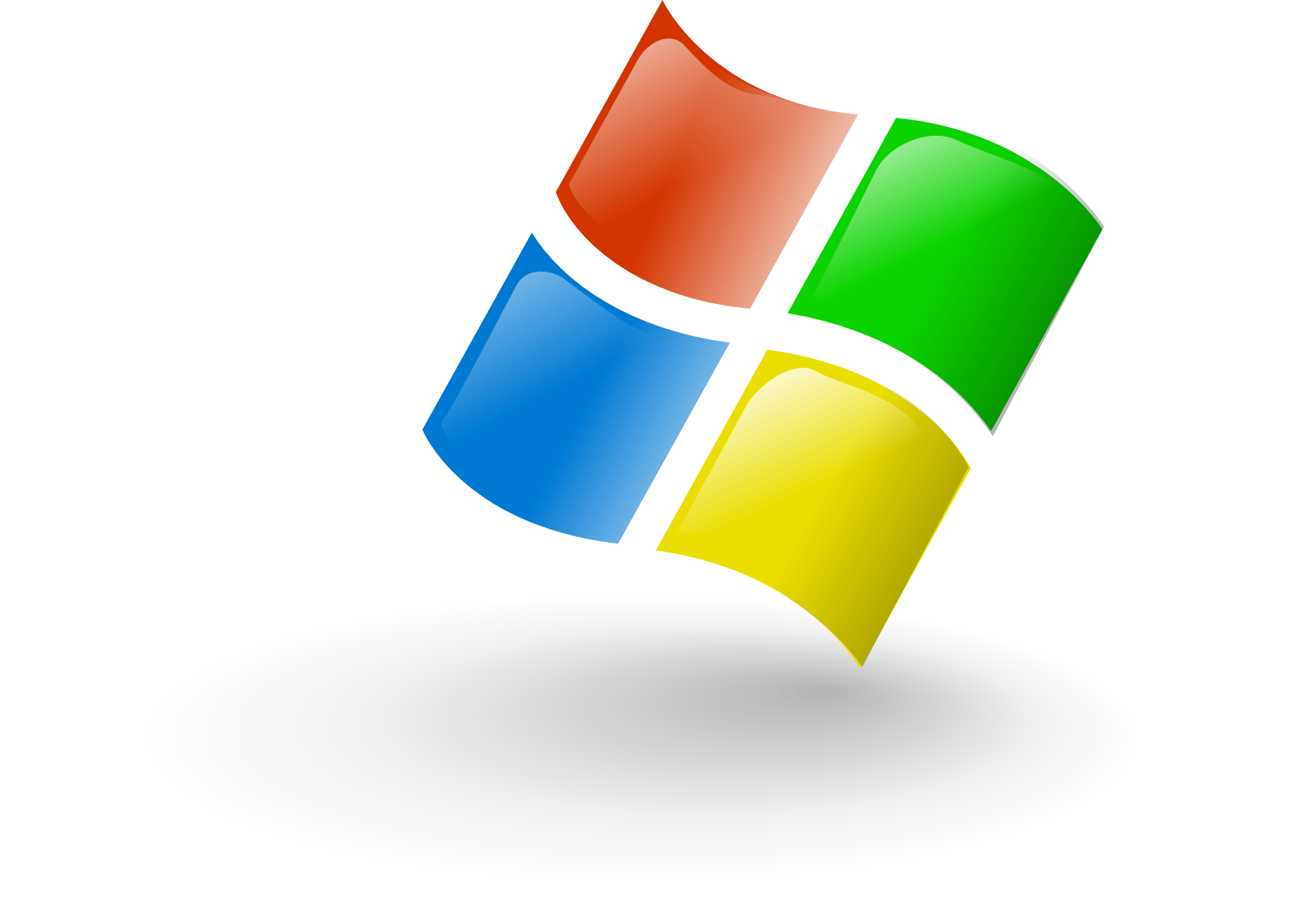Windows Server 2019 Essentials vs Standard: What Are the Differences?
Posted on January 07, 2023 by Logo Design Tips and Tricks

Microsoft generated revenues of $184.90 billion in 2021, highlighting how the company continues to be a major player in the IT market. Of course, their Windows platform is used throughout the world, and you may be thinking about buying their Server 2019 system.
But what are the differences between Windows Server 2019 Essentials vs Standard editions? Before you invest in this terrific software, you’ll want to know which version can best meet your needs. That’s why we’re going to take an in-depth look at the features and benefits of both systems.
Keep reading to learn more.
Number of Users
Windows 2019 Essentials is meant for smaller businesses. If you only need 25 employees or less to have access to the system, this could be the best option for your company. There is also a 50-device limit with this plan.
However, if you require greater numbers of people to use your software, you may be better off with the Standard edition. Remember that if you buy the Standard version, you will require licenses to stay compliant. Should you need to buy licenses, be sure to get a great price on an RDS CAL.
Functionality
It’s no surprise to learn the Windows Standard edition offers more functionality than the Essentials plan. For example, it provides system insights using predictive analytics. You can also benefit from replicated storage between two Windows servers.
If you need network visualization, this could also be the right system for you. But, not every business will require these tools. If your company has simpler needs, you could start with the Essentials plan and then upgrade as your requirements become more complex.
Pricing
When deciding on your new system, the cost is likely to be a key factor. Windows Server 2019 Standard edition is around twice as expensive as the Essentials plan. You’ll also need to factor in the cost of the Standard edition licenses.
But, there is an extra cost for a reason. The additional features can make a huge difference, and you could find they pay for themselves. This can particularly be the case if you have a large workforce who need lots of devices to perform their jobs.
You can also add more licenses as your business grows and you hire more staff. These aspects can be critical when making your final decision.
Now You Know the Differences Between Windows Server 2019 Essentials vs Standard Versions
There are crucial differences between Windows Server 2019 Essentials vs Standard editions, and it’s important to know what they are before making a purchase. While the Essentials version is ideal for smaller businesses, you may prefer to invest in the Standard edition to gain access to more functionality. But, the Essentials edition is more affordable if you are on a budget.
Whichever version you choose, you’re sure to enjoy using a great Windows system!
If you’ve found this Windows Server 2019 article helpful, be sure to check out more of our fantastic blog posts.
Logo Designer Near Me: How To Choose the Right One
Posted on January 07, 2023 by Logo Design Tips and Tricks

Advertising is essential for any brand to flourish. Your products, services, and overall brand image will benefit from advertising your products or business. You’ll often see big companies spend thousands of dollars marketing their brand.
Don’t let this discourage you. You must focus on all areas of your brand, including your logo. A solid logo can catch consumers’ eyes.
So, how do you choose a logo designer near me? There can be a lot of factors that influence the creation of your brand’s logo. Here’s a guide to help you find the right designer to fit your brand.
Read along to learn more!
Look and Consider the Cost
Depending on the needs, the cost of logo design can range from cheap to quite expensive. Making sure the Logo Designer fees are within the business’s budget range should come first when researching. In addition to considering cost, look for a designer who provides realistic and attractive logo samples.
Ask other businesses for referrals and look for recommendations from people who have already engaged the designer. In addition, make sure to consider the amount of time the designer will take to complete the logo. A professional designer can create a logo that stands out and helps your business brand itself positively in the marketplace, so it pays to select carefully.
Consider the designer’s portfolio of previous work and research how successful each logo has been in the marketplace. Also, compare the costs of different designers while factoring in the value they offer, such as how much time they’re likely to spend on each project, what design features are likely to include, and how they plan to track results. As a rule of thumb, a logo should cost approximately 1-2 % of your total business budget, so make sure you negotiate appropriate pricing.
Read Customer Reviews
Customer reviews are one of the most critical pieces of information when selecting a designer. Through customer reviews, you can get first-hand accounts of working with a particular designer and whether the designer was able to meet the expectations set by the customer. Therefore, it’s essential to understand how to read reviews when choosing a designer.
First, look out for patterns of recurring positive comments. If a lot of different customers are echoing similar positive sentiments, then this is usually a good sign. If there are many regular negative comments, then this indicates that the designer may not be the right fit.
Second, look for anecdotes or stories that customers share with their reviews. These are usually reasonable indications of the quality of service and logo design the customers received. Third, look out for assessments that review the graphic design skills of the designer, as this will give you a good idea of the quality of logos that the designer produces.
Finally, read as many reviews as possible to make an informed decision. Positive, honest reviews can help you select the right designer for you and your business.
Ask for Referrals
Start by reaching out to family, friends, and colleagues who have worked with a designer. Ask them to provide referrals to influential designers they have worked with previously. Make sure to thank them for taking the time to give a referral.
Also, check online reviews, ratings, and research to identify designers with positive thoughts. Next, give potential designers a brief description of the project you need for the logo design.
After that, ask for a portfolio of their previous logo designs and samples of projects they have completed. Finally, ask for references from previous clients satisfied with their plans. Following these steps should make it easy for you to find the right designer for your project.
Know Their Experience
It is essential to take the time to investigate and consider their experience. Do they specialize in graphics or illustration? Do they have a portfolio that aligns with your style? How familiar are they with the industry you’re targeting? Knowing their experience can help determine if this designer is the right fit.
If the person has only done a few projects in the past, it might not be a good indication that they have the skill set to do yours. Also, look for reviews and testimonials to understand better what others think about their work.
Find someone with the experience and skill set to deliver your needs. Check out c squared social‘s team of professional designers for all your design needs.
Look For Their Portfolios
Most experienced designers will have a collection of their work ready to view, which allows you to see their finished designs. In their portfolio, they pay special attention to the placement of different methods, the colors used, and how well the logo fits the intended message. Try to identify the symbols you connect with, as this will give you an idea of the logo style that the designer will produce.
Use these elements to determine if the designer’s style matches your needs. It is also important to read customer reviews to understand the designer’s past successes better.
Find the Best Logo Designer Near Me Today
When it comes to choosing a logo designer near me, take your time and do your research. Look for portfolios, reviews, and people’s experiences. Consider the price and other factors that might be important to you.
Choose someone who understands your message and will create a logo that’s just right for you. Take the time to reach out and start the conversation today.
Did you find this article helpful? If so, read our blog today for more information!
5 Email Best Practices for Small Businesses
Posted on January 06, 2023 by Logo Design Tips and Tricks

Sorry for the pandemic. But it has proved to be an opportunity for you to step up your marketing game!
With social media at the forefront of business advertising, it’s easy to forget that at the tail is email. It provides personal and direct communication to superfans. Best of all, it reaches people regardless of where they are. Now, the question remains, what is the best email best practices for small businesses?
This article will cover everything to help you learn how to boost your reach and profit via email. Let’s get into it!
1. Make a Plan To Stay Well-organized
Develop a consistent filing system. Organize emails into folders based on the project, client, and contact. Using accurate and descriptive labels will help in managing your inbox.
Set up a regular schedule to review, prioritize, and delete emails. Utilize folder-based rules and filters to streamline the process further.
Finally, consider signatures, setting email preferences, and confidential information.
2. Think Twice Before Sending Mass Email Blasts
Mass emails may be tempting to get a message out quickly to many people. But, they often contain generic language not tailored to the recipient. It can result in emails being considered spam.
For a small business, it’s best to craft individually tailored emails. Use personalized information to grab the reader’s attention. Provide a specific call to action for the reader to respond to.
Offer incentives or promotions to incentivize a response in the email. Also, always encourage customers to provide feedback. Show appreciation to those who do respond.
3. Leverage Automation for Efficiency
Automation can help with scheduling emails and lead nurturing. It can also help cut down on manual labor and save time.
Automation can also be an effective way to segment emails and personalize content. It can create triggers and more automated emails.
By using automation, create more effective email campaigns. Tailor them specifically to customers to promote new products and services.
4. Implement Email Marketing Analytics Tracking
To be successful, it is important to implement email marketing analytics tracking. This allows small businesses to measure the effectiveness of their emails. They can make adjustments to their strategies accordingly.
It also helps identify areas where emails might not perform as well as expected. This allows businesses to take corrective actions.
Finally, email analytics tracking makes it easy to track individual email campaigns. You can identify the strategies that lead to the most conversions.
5. Always Follow Good Email Etiquette
Always address the recipient by name and greet them warmly. Double-check the spelling and grammar of the message. Keep the subject line brief yet descriptive. Be as concise as possible and avoid jargon or flowery language.
When replying to an email, cc or bcc any necessary contacts. Do not send any message before it is ready. Also, use professional language that is appropriate for the audience.
Lastly, be sure to include contact information. This will help the recipient know where to contact you if needed. Always practice patience and courtesy when sending emails.
Manage Your Inbox With These Email Best Practices
For small businesses, an email is a valuable tool for reaching customers. Remember, keep emails concise. Stay mindful of personalization. And track engagement to maximize email reach.
Take the time to use these email best practices. Implement a successful email marketing strategy.
Have questions? Check out our page today for more tips and info!
7 Reasons Your Business Needs a Virtual Mailbox
Posted on January 05, 2023 by Logo Design Tips and Tricks

It’s estimated that around 20% of businesses fail during their first year. The numbers get worse over time, though, and almost half will fail after five years.
While this might seem concerning, it’s worth noting that businesses that implement the right strategies can definitely stay afloat. One thing companies should consider is a virtual mailbox.
A virtual mailbox is a unique approach to receiving physical mail in digital format. It goes through a third party that takes pictures and sends them to the business in question. Keep reading for seven reasons why your business probably needs a virtual mailbox.
Location Flexibility
It’s quite common for even small companies to have customers from around the world. In some cases, the team or many staff members have to travel or live abroad. This can turn managing physical mail into a nightmare, especially without a proper mailing address in the country of business.
A virtual mail and address service offers location flexibility. This is because the business doesn’t have to have its own personnel or a mailing address to receive and process physical mail. The virtual mailbox company receives the contents, shares the pictures, and then stores or discards the mail in question.
Convenience
While it’s possible for a business to pay for a mailing address and hire someone in that area to receive physical mail, paying for a virtual mailbox simplifies the overall process. It skips the hiring process and mailing address filtering process entirely. A monthly fee is enough to get a team that scans and forwards physical mail contents whenever necessary. Best of all, it’s accessible from anywhere in the world.
Ease of Use
Virtual mailboxes are well-known for their ease of use. Both setting up and using a virtual mailbox is simple. Most companies that offer this form of digital mail let users sign up online, as well. So, the entire process is streamlined, easy to understand, and usually comes with a way to contact customer service around the clock.
Typically, the digital mailbox personnel will receive mail and distribute it to each client’s mailbox. They’ll then open the mail and take any necessary pictures. These images are then compiled and sent digitally to each client. That’s how each business receives the contents of their physical mail.
Security
A common issue that comes with hiring someone you don’t know well to manage your physical mail is that they might make mistakes or intentionally discard important content. A virtual mailbox makes the whole process much safer.
The idea behind a virtual mailbox is that your physical mail arrives at a secure location in the hands of a professional and trustworthy team. And any mail that isn’t discarded stays safe at a secure location. Not to mention, these services typically have guarantees that ensure every package is received properly.
Scalability
Another common issue that businesses managing their physical mail run into involves scalability. In an ideal situation, a business will grow and increase its customer base over time. This means the company has to scale its internal and external services with that growth.
As you might imagine, this means a business also has to invest more time, money, and effort in its physical mail management. A virtual mailbox, however, makes it much easier to scale mail services. Instead of increasing staff, changing a mailing address, and otherwise investing in mail management, a company only has to change its subscription.
Some virtual mail systems offer additional services rather than a plan change or upgrade.
Professional Image
Maintaining a professional image is perhaps one of the best benefits of investing in a virtual mailbox. This is true for businesses that don’t have a brick-and-mortar location or a business that would prefer publicly displaying a separate address.
For businesses that don’t have a brick-and-mortar location, a virtual mailbox provides the aforementioned benefits. These include scalability, better security, and help to avoid a ton of inconveniences.
Businesses that would prefer a different address, though, are an entirely different story. For example, if a company has customers in the US, but has a mailing address in a different country, its professional image can take a serious hit. Potential buyers might doubt the business’ legitimacy or worry about sending or receiving packages internationally.
So, a company could hire a virtual mailbox in the US to facilitate mailing back and forth between the company and its customers. Additionally, people that see the address based in the same country as their residence are more likely to trust that business. It’s something that has the potential to make or break a company.
Cost Savings
While it might seem obvious, it’s worth mentioning that a virtual mailbox is typically much more cost-effective than renting a physical space or even purchasing a PO Box. This is especially true when you factor in the additional costs that come with managing mail, including time and money on travel costs.
Investing in a Virtual Mailbox
More businesses have an international reach than ever before. Managing content for customers in multiple countries isn’t easy, and can cost quite a bit. Investing in a virtual mailbox looks to solve quite a few problems that businesses can run into.
A digital mailbox is more cost effective, often more secure, and solidifies a professional image for a business. It doesn’t stop there, though, as they’re easy to use and even scalable. Any company that’s looking to better engage its customer base and remove the hassle of managing a mailing address and the contents that arrive should consider investing in one.
Hopefully this article provided you with some useful information on managing business mail digitally. If it did, consider taking a look at some of the other posts on the site!








